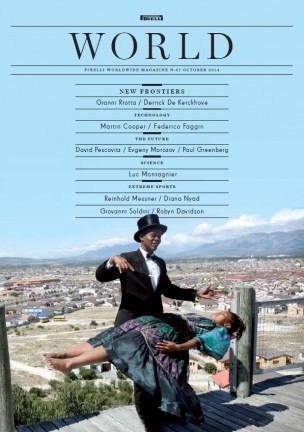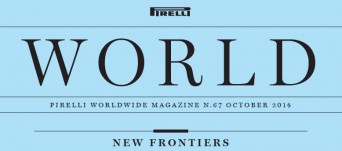Commenting on the US defeat in 1975 in Vietnam, the last CIA station chief in Saigon, Thomas Polgar, declared many years later “We were beaten because the 1973 coup in Chile had drained the CIA of all support from the US Congress, too many congressmen hated us, and because the Yom Kippur War in 1973 had shifted too many resources, in the middle of an energy crisis, to defend Israel. With no interlocutors in Washington, reduced funding and public opinion distracted, we were defenceless against the Hanoi offensive.” http://goo.gl/NsG7hQ Whether Polgar is right or wrong about the case in question, the example clarifies the difficulty traditional journalism has, both on paper and online, in capturing the complexity of the globalised world. When in his graduation thesis in 1962 the philosopher Jürgen Habermas outlined “the public sphere of critical opinion”, the system he was studying was simple and linear: a restricted group of editorialists and journalists shaping opinion in democratic countries, selecting the reality and the facts shared by citizens and giving them order. In Milan, New York and Paris, opinions and ideas from the Corriere della Sera, The New York Times and Le Figaro were shared. The world changed with the end of the Cold War and the end of mass society. The decline in newspaper circulation can be traced back to 1974 in the USA (“Il web ci rende liberi?” / “Does the web set us free?”, Einaudi 2012) or even 1972 according to Hal Varian, Google’s Chief Economist, and to 1985 in Europe. It precedes the spread of the internet by an  entire generation and therefore defies the usual explanation that “traditional mass media have lost ground because of the web”. In fact, public opinion in the personal media society has lost respect for traditional mass media not because of its format - “paper versus web” - but rather as a result of a cultural turning point. The classic centralised model of communication studied by Habermas, “One Newspaper for Many Equal Readers”, has been irrevocably overturned. The crisis of universities and professions following 1968, the crisis in ideologies after 1989, which the philosopher Fukuyama defined the “End of History”, widespread secularism in the West, the crisis of the monotheist religions, the end of science as an “objective” frame of reference, the success of postmodern critical theories that relativise the concepts of “Reality” and “Truth” - with the sceptical guru Derrida dominating teaching on American campuses - are various factors which, together, have eroded the power of “One Newspaper, Many Homogeneous Readers” communication. It is the end of mass society, the affirmation of what the sociologist Zygmunt Bauman calls the “liquid society” but which is more correctly a “complex society”, and not the web, that has made the “simple analyses of old-fashioned newspapers” ineffective. Complexity is needed in order to know who will wr tomorrow’s – N. 6 7 o c t o b e r 2 0 1 4 – 5 - like Polgar - how to explain Vietnam, Chile and the Middle East from a distance. In the immediate comments in the years following the Vietnam War, no analyst used the “global” method; everyone’s viewpoint was restricted to their own individual scenario. Now it is possible to keep a wide variety of different viewpoints under observation, even to the point of “N = all cases”, thanks to Big Data. Information (whether journalistic, institutional, corporate or digital) must therefore change in order to maintain its authority, objectivity and reliability in this new, complex, multifocal environment. The web equates articles corroborated by authoritative sources and those lacking any integrity; it argues with verve but often with dubious credibility. Through an experiment featuring a fictional Italian senator who invested billions of euro in a fake program to protect ex-politicians, the academic Walter Quattrociocchi has shown how the web “swallows” false news stories. According to an essay by Farida Vis for the World Economic Forum, the “circulation of false news stories is one of the 10 dangers of 2014”. (See Walter Quattrociocchi “Collective attention in the age of (mis) information” arXiv.org > cs > arXiv:1403.3344, 2014 and Farida Vis “Outlook on the global agenda 2014”, “The spread of false news”). Data-driven journalism, big data and online analytics research can restore trustworthiness to information on the web. Take the case of Woburn, Massachusetts: surprised by rumours of a presumed rise in deaths caused by leukaemia due to pollution of ground water, the local community requested the intervention of a scientific commission of epidemiologists to settle the dispute. After an epidemiological and statistical analysis, the commission concluded that there was no spike in deaths nor any link with pollution, but their report did not resolve the matter. The community was only interested in the scientists’ opinion if it confirmed the prevailing view: the leukaemia had to come from pollution. The opposite opinion led to claims of conflicts of interest and corruption of the commission. A similar model of rigid preconceptions can be seen in the debate on climate change, High Speed Trains and GMOs. The debate between specialists, politicians and militants splinters public opinion into warring tribes, which the web confines to their respective silos, obstructing open debate. People don’t look online for facts in order to form opinions, as they did in Habermas’s time. On the contrary, they first form an opinion then look online for facts to support it. Freeing ourselves from this trap and defending truth and equanimity online is the crucial challenge for democratic information. Contrary to what too many gurus - both futurists and conservatives - believe, it is a challenge that is not about technology, but about culture, about values. Failure to overcome it would mean a democracy devoid of debate, incapable of deciding and destined to decline.
entire generation and therefore defies the usual explanation that “traditional mass media have lost ground because of the web”. In fact, public opinion in the personal media society has lost respect for traditional mass media not because of its format - “paper versus web” - but rather as a result of a cultural turning point. The classic centralised model of communication studied by Habermas, “One Newspaper for Many Equal Readers”, has been irrevocably overturned. The crisis of universities and professions following 1968, the crisis in ideologies after 1989, which the philosopher Fukuyama defined the “End of History”, widespread secularism in the West, the crisis of the monotheist religions, the end of science as an “objective” frame of reference, the success of postmodern critical theories that relativise the concepts of “Reality” and “Truth” - with the sceptical guru Derrida dominating teaching on American campuses - are various factors which, together, have eroded the power of “One Newspaper, Many Homogeneous Readers” communication. It is the end of mass society, the affirmation of what the sociologist Zygmunt Bauman calls the “liquid society” but which is more correctly a “complex society”, and not the web, that has made the “simple analyses of old-fashioned newspapers” ineffective. Complexity is needed in order to know who will wr tomorrow’s – N. 6 7 o c t o b e r 2 0 1 4 – 5 - like Polgar - how to explain Vietnam, Chile and the Middle East from a distance. In the immediate comments in the years following the Vietnam War, no analyst used the “global” method; everyone’s viewpoint was restricted to their own individual scenario. Now it is possible to keep a wide variety of different viewpoints under observation, even to the point of “N = all cases”, thanks to Big Data. Information (whether journalistic, institutional, corporate or digital) must therefore change in order to maintain its authority, objectivity and reliability in this new, complex, multifocal environment. The web equates articles corroborated by authoritative sources and those lacking any integrity; it argues with verve but often with dubious credibility. Through an experiment featuring a fictional Italian senator who invested billions of euro in a fake program to protect ex-politicians, the academic Walter Quattrociocchi has shown how the web “swallows” false news stories. According to an essay by Farida Vis for the World Economic Forum, the “circulation of false news stories is one of the 10 dangers of 2014”. (See Walter Quattrociocchi “Collective attention in the age of (mis) information” arXiv.org > cs > arXiv:1403.3344, 2014 and Farida Vis “Outlook on the global agenda 2014”, “The spread of false news”). Data-driven journalism, big data and online analytics research can restore trustworthiness to information on the web. Take the case of Woburn, Massachusetts: surprised by rumours of a presumed rise in deaths caused by leukaemia due to pollution of ground water, the local community requested the intervention of a scientific commission of epidemiologists to settle the dispute. After an epidemiological and statistical analysis, the commission concluded that there was no spike in deaths nor any link with pollution, but their report did not resolve the matter. The community was only interested in the scientists’ opinion if it confirmed the prevailing view: the leukaemia had to come from pollution. The opposite opinion led to claims of conflicts of interest and corruption of the commission. A similar model of rigid preconceptions can be seen in the debate on climate change, High Speed Trains and GMOs. The debate between specialists, politicians and militants splinters public opinion into warring tribes, which the web confines to their respective silos, obstructing open debate. People don’t look online for facts in order to form opinions, as they did in Habermas’s time. On the contrary, they first form an opinion then look online for facts to support it. Freeing ourselves from this trap and defending truth and equanimity online is the crucial challenge for democratic information. Contrary to what too many gurus - both futurists and conservatives - believe, it is a challenge that is not about technology, but about culture, about values. Failure to overcome it would mean a democracy devoid of debate, incapable of deciding and destined to decline.
LOGIN | SIGN UP
Who will write tomorrow's news?
Dall'archivio Pirelli
Riotta_
20 ott, 2014
Contributi degli utenti
comments powered by Disqus
leggi altro su "new media"
leggi altro su "news"
leggi altro su "complex network"
leggi altro su "complex system"
leggi altro su "pirelli"